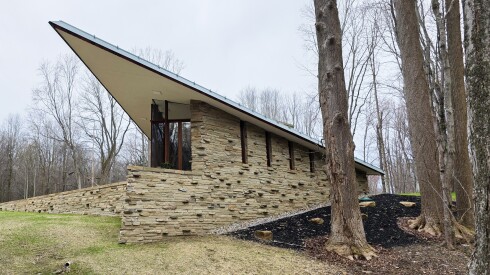Highlights
70 Alt-Stralau
Berlin’s most surreal bar experience is right where you’d expect it to be—in the trendy Friedrichshain neighborhood. Just a few blocks from some of Berlin’s most legendary nightclubs, the club Wilde Renate is a mismatched collection of buildings surrounding a small beer garden. It’s an easy place to get lost, even more so because there’s a purposely-built labyrinth underneath the nightclub. The labyrinth, Peristal Signum, isn’t just an art installation but a full-on experience for the mind. It was designed haphazardly by three artists over nine months in 2010. The maze was built completely out of found scrap materials (like most everything else in Berlin) and includes everything from glass bottles to car parts. For 10€, you’re given a token to enter the labyrinth. Entries are scattered so that only one person enters at a time, though you’re likely to run into people once inside. Without spoiling too much, I’ll say it’s a trippy experience. Persistal Signum is open Wednesday to Saturday, from 6pm to 10pm, at Salon zur wilden Renate. Ask the bartender to put your name on the list to get inside the labyrinth. There’s usually a wait.
Friedrichshain, Berlin, Germany
While living in Berlin, I stayed on Warschauer Strasse, on the end closest to the U-Bahn station of the same name. On an evening walk before dinner, I took a walk down the street to explore my new surroundings. This particular set of doors is the epitome of the neighborhood, to me.
Mühlenstraße 3-100, 10243 Berlin, Germany
The most famous remaining stretch of the Berlin Wall gets its name from its location on the east side of the Spree River, as well as from its collection of political and satirical murals. Originally painted just after the wall fell, the murals were repainted (or in some cases painted over) in 2009 as a way of cleaning up the increasingly decayed originals and in recognition of the 20th anniversary of the fall of the wall. Today, a fence partly protects the gallery to prevent vandalism of the murals, but people throng here nonetheless, especially in summer. A museum at the site tells the fascinating story of the structure through interactive displays, original newsreel footage, and filmed interviews with Berliners who lived on both sides.
Karl-Marx-Allee
Formerly considered East Berlin, Karl Marx Allee is one of the best places to get a glimpse of socialist history, architecture, and local life in Berlin from the past. The famous street is 89 meters wide and 2 km long and still houses some of the “wedding cake” architecture that East Germany was known for. You don’t need a guide. Save your money and simply check out the numerous (30+) plaques along the way (on both sides of the street) which provide you with history, stories, and old photos of the famous street. I suggest that you start at the Alexanderplatz U-Bahn station and walk along the north side of the street, then return along the south side—to get the full scope of the ultra-wide street.
An der Schillingbrücke 3, 10243 Berlin, Germany
Yam is a unique park that truly makes Berlin a city of the free. Created by rastafarians, or rugged nomad expats from Jamaica, Ghana, and Africa, they’ve created an environment that lives up to their dreams; a carefree zone where the only thing that matters is a cold beer, good people, music, food, and sports. Once inside, you walk through lots of sands with implanted picnic tables. Rastafarians serve food from stands that stems from a background of Caribbean or african roots. Cold local beer is served by a bar overlooking the ocean and sport fields are open for any basketball or soccer takers. Come by day to relax under the sun or come by night to dance through a cultural endemic.
Kiehnwerderallee 1-3, 12437 Berlin, Germany
Even fun has a shelf life. This is what runs through my mind as I walk around Spreepark, the abandoned, dilapidated amusement park in Berlin. When East Germany and the GDR fell, so did many of the businesses operating under the rules of communism. They were never really able to make the transition to capitalism successfully. Spreepark, located in the East German part of Berlin, was one such casualty. Even though Spreepark is “dead,” it is now a present-day photographic amusement park. The park is closely guarded, and trespassing is typical but also dangerous, so an enthusiastic, enterprising young man has started running tours on the weekend, providing access to shoot away to your heart’s content. The rides and stands have all deteriorated in place over the years, which makes for an eerie photographic landscape. More Information: Tour information (only in German) – www.berliner-spreepark.de/ – Tours are given mainly on the weekends. If you want to go on a tour, contact him, as he does know a little English and you can at least book yourself into a tour and get access for photography—even if you don’t understand the stories.















